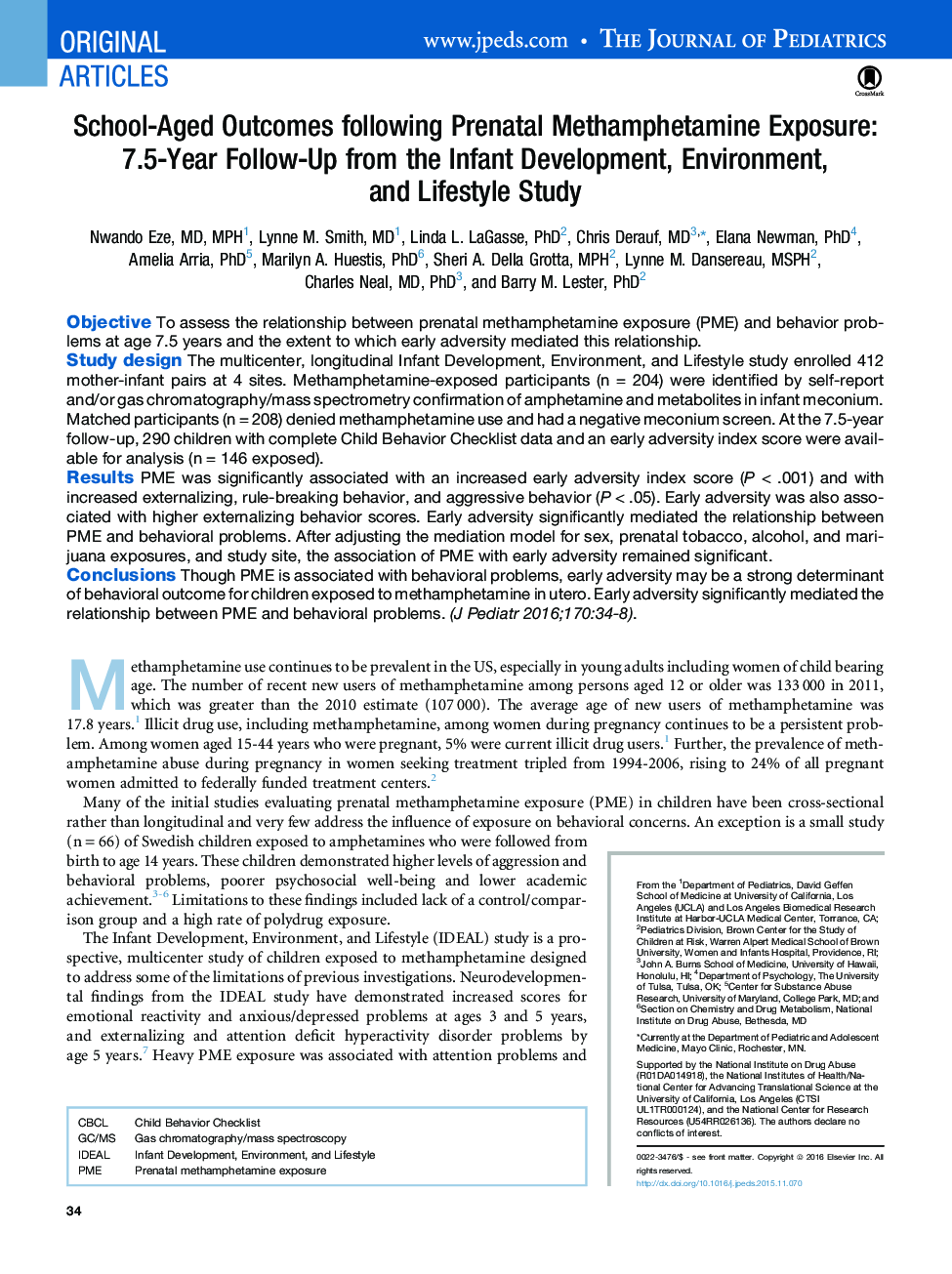| Article ID | Journal | Published Year | Pages | File Type |
|---|---|---|---|---|
| 6219050 | The Journal of Pediatrics | 2016 | 6 Pages |
ObjectiveTo assess the relationship between prenatal methamphetamine exposure (PME) and behavior problems at age 7.5 years and the extent to which early adversity mediated this relationship.Study designThe multicenter, longitudinal Infant Development, Environment, and Lifestyle study enrolled 412 mother-infant pairs at 4 sites. Methamphetamine-exposed participants (n = 204) were identified by self-report and/or gas chromatography/mass spectrometry confirmation of amphetamine and metabolites in infant meconium. Matched participants (n = 208) denied methamphetamine use and had a negative meconium screen. At the 7.5-year follow-up, 290 children with complete Child Behavior Checklist data and an early adversity index score were available for analysis (n = 146 exposed).ResultsPME was significantly associated with an increased early adversity index score (P < .001) and with increased externalizing, rule-breaking behavior, and aggressive behavior (P < .05). Early adversity was also associated with higher externalizing behavior scores. Early adversity significantly mediated the relationship between PME and behavioral problems. After adjusting the mediation model for sex, prenatal tobacco, alcohol, and marijuana exposures, and study site, the association of PME with early adversity remained significant.ConclusionsThough PME is associated with behavioral problems, early adversity may be a strong determinant of behavioral outcome for children exposed to methamphetamine in utero. Early adversity significantly mediated the relationship between PME and behavioral problems.
